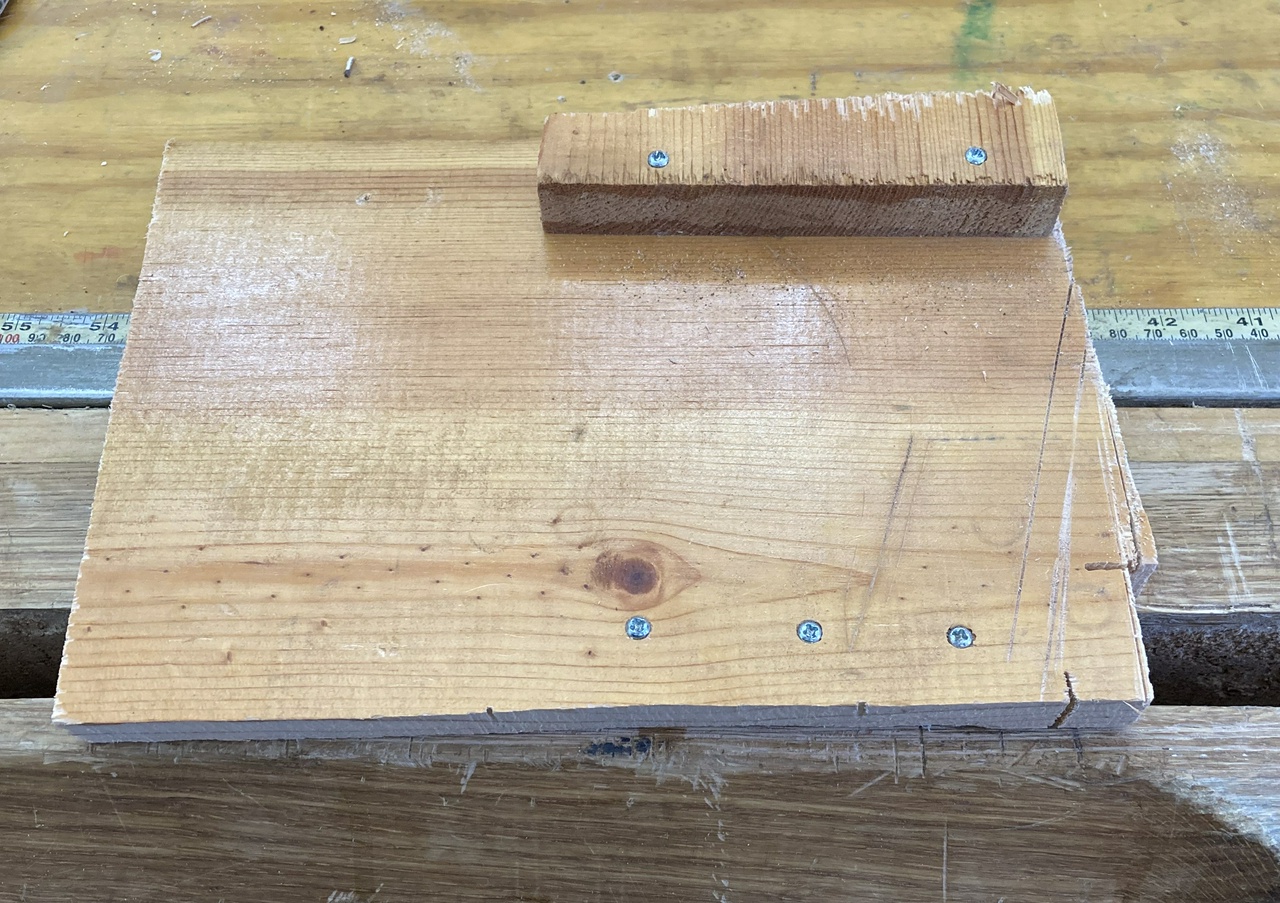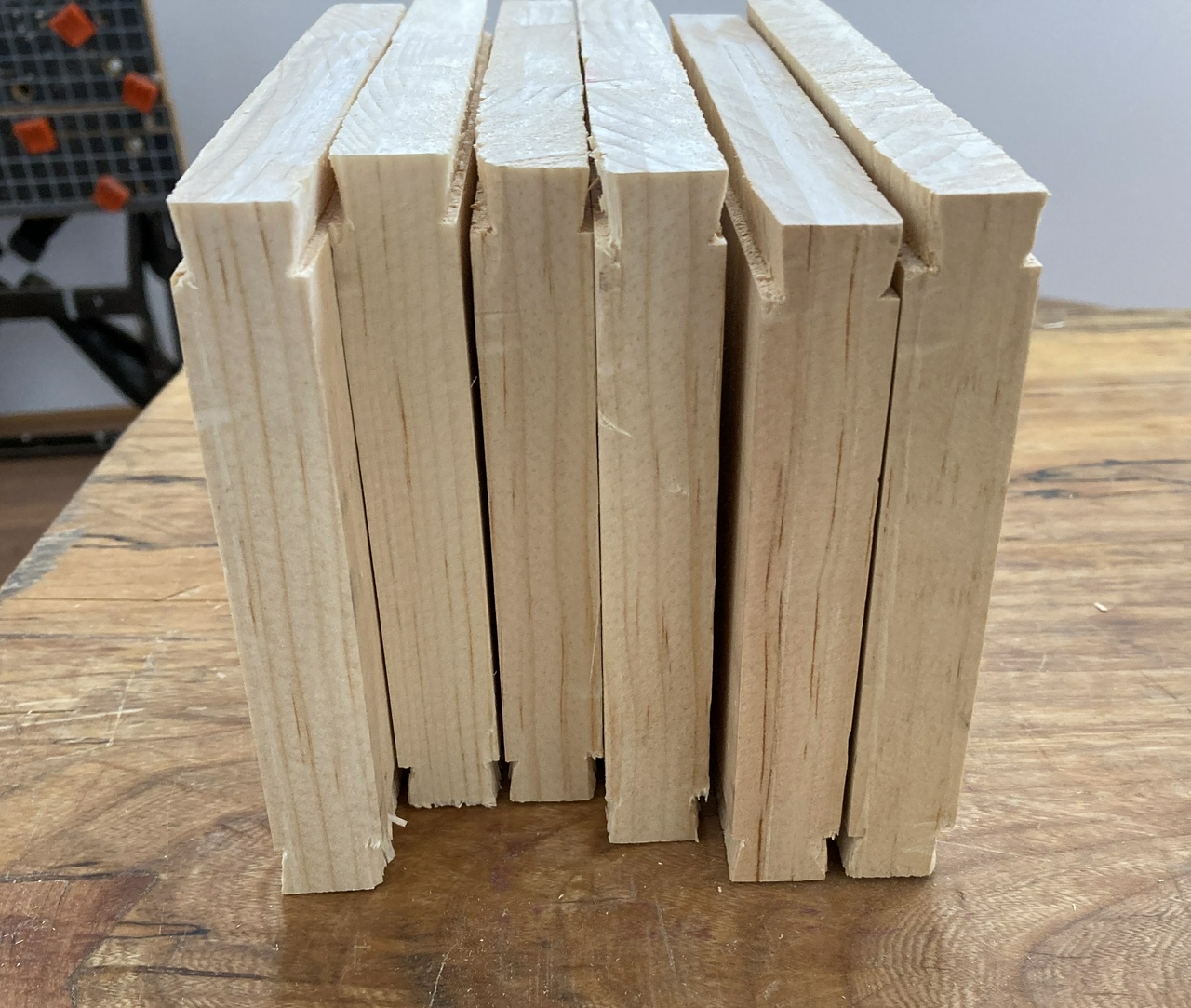Boring Tools Till – Horizontal Bits
May 7, 2020
I started cutting sliding dovetail sockets in the horizontal bits today. More of the same, but I had a little blowout on the third socket I was cutting, so I glued that back together and decided to work on the part that will hold the braces.
I started by laying out marks 3½ inches apart, and drew marks four inches from the edge of the board (or 3½ from the other edge). Picked out the 12/16 bit, chucked it in my brace, and started drilling holes. I picked the ¾ inch bit because it had relatively sharp spurs (I think I touched them up before we moved), and it's big enough to fit the brace I was using into. The fat part of the handle is closer to an inch, but if I have to enlarge the holes a little bit later on, I'll deal with that then.


With everything laid out and drilled, I took my square and drew lines more or less to the edge of each hole. If I was off a little, I didn't worry too much.

I put the board in my face vise and started sawing. I was using my Veritas tenon saw, as it had enough reach to make the cuts without bottoming out the back. It's filed hybrid, and I'm cutting pine, so it made pretty short work of the cuts.

Once that was done, I took my knife and chamfered the edges of the slots, and used my spokeshave to chamfer the front edge of the board. Then it was time to sweep up for the day and go start cooking dinner. Hopefully tomorrow I can finish up the remaining two shelves and ponder putting the carcass together.

I also should think about some sort of reinforcement on the board that'll be carrying the braces. Three inches of pine between holes will probably mean that I'll snap something off eventually. Maybe I'll start tomorrow by digging through my scrap bucket and see what I have that I can glue under that board with the grain running front to back to strengthen things up. On second thought, I think I have some heavy veneer somewhere, so I may detour to unpack a few boxes and see if I can find that.
Contents #woodworking #storage
Discuss... Reply to this in the fediverse: @davepolaschek@writing.exchange





















